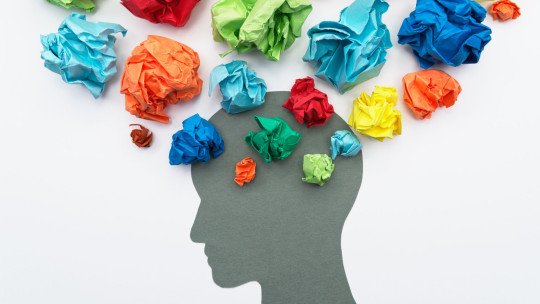Emotions are a very important phenomenon within the field of psychology because they significantly influence thinking and behavior, which is why they also impact mental health; Furthermore, they are composed of expressive behavior, conscious experience and arousal at a physiological level.
Neutral or ambiguous emotions are those that are neither pleasant nor unpleasant; That is, they are those emotions that are neither negative nor positive, although they share some characteristics of both types, since they are similar to the positive ones in terms of their brevity at a temporal level and the negative ones in terms of the great mobilization of resources they generate.
Emotions are often perceived as colorful spectrums of joy, sadness, anger, and fear, yet nestled among them lies a category that often goes unnoticed: neutral emotions. While not as conspicuous as their more intense counterparts, neutral emotions play a subtle yet essential role in our psychological landscape. In this exploration, we delve into what neutral emotions are, their purpose, and how they influence our daily lives
What do we understand by emotion in general?
The concept of emotion, etymologically comes from the Latin word “emotio”, whose meaning is “that which moves us towards”, “impulse or movement”, being a capacity of human beings that brings us closer or can also distance us from certain situations. , circumstances and/or other people.
Thus, emotions are usually impulses that are directed towards an action, which is why they incline people towards a specific behavior.
In the field of psychology, emotion is a determined state of an organism that survives in a series of very defined conditions (emotional situation) being accompanied by an experience that is subjective and also a series of somatic and visceral manifestations; Emotions can be studied from different theoretical perspectives, such as cognitive, behavioral, physiological, evolutionary and neurological theories.
We can also find within the field of psychology the following definition of emotion: it is known as that mental state, strong feeling, concern or intense impulse that is directed towards a specific object and evidenced through behavior and psychological changes, as well as through facial expressions or the gestures of communication, in addition to the modulation of feelings; all of this accompanied by manifestations through the autonomic nervous system (ANS).
There are different types of emotions: neutral or ambiguous emotions, positive (pleasant emotions) or negative (unpleasant emotions). Emotions can also be classified into the following categories: primary or basic, secondary, aesthetic, social or instrumental.
Now that we have seen what the concept of emotion means, from different perspectives, and what the different types are, we will go on to explain what neutral emotions consist of.
What are neutral emotions?
Neutral emotions, also known as ambiguous emotions, are those that are neither pleasant nor unpleasant. In other words, are those emotions that are neither negative nor positive, although they share some characteristics of both types , since they are similar to the positive ones in terms of their brevity at a temporal level and the negative ones in terms of the great mobilization of resources they generate. Among the neutral emotions, it is worth highlighting the emotion of surprise.
You could say that neutral emotions are the shortest of all , since they usually occur suddenly in the face of a strange and/or novel situation, disappearing as quickly as they had appeared. Likewise, these types of emotions usually quickly become another emotion that is congruent with the context and the specific situation that triggered the neutral emotion (e.g., surprise at an unexpected visit from a friend who you had not seen for years, who immediately becomes an expression of joy at seeing his friend).

On the other hand, In conjunction with the emotional reaction, there is a general increase in cognitive activity which allows the subject to identify and also carry out an analysis and assessment of the factors and conditions that have triggered said emotion.
It should be noted that there are authors who consider that there are no neutral emotions, since they question whether surprise is really an emotion as it has no valence (whether positive or negative); However, there are others who consider that in addition to surprise there are other neutral emotions, these being the following: compassion and hope; although these are less recognized as neutral emotions than surprise.
1. Triggers of neutral emotions
Neutral emotions usually They are triggered by a series of novel stimuli, these being of an intensity that can be weak or moderate ; Neutral emotions can also be triggered by sudden increases in intensity at the stimulus level, the interruption of a task that was being carried out at the moment or the appearance of events that are out of place or that the person did not expect.
2. Cognitive processing of neutral emotions
At a cognitive level, neutral emotions are processed with a low level of control and prediction since normally the triggers for this type of emotions tend to appear abruptly or quite quickly, so the person must cognitively process and face that situation urgently.
The Purpose of Neutral Emotions
- Homeostasis : Neutral emotions serve as a psychological equilibrium, maintaining a sense of balance and stability amidst the ebb and flow of life’s experiences. They allow us to navigate the complexities of daily existence without being overwhelmed by emotional highs or lows.
- Cognitive Processing : Neutral emotions facilitate cognitive processing and decision-making by providing a neutral backdrop against which we can assess information and make rational judgments. In moments of emotional neutrality, our cognitive faculties are sharpened, enabling clearer thought and discernment.
- Adaptation : Neutral emotions play a crucial role in adaptation and resilience, allowing us to adjust to changing circumstances and cope with adversity more effectively. By fostering emotional resilience, neutral emotions help us weather life’s challenges with equanimity and fortitude.
The Influence of Neutral Emotions
- Mood Regulation : Neutral emotions contribute to mood regulation by serving as a buffer against extreme fluctuations in mood and affect. They provide a sense of emotional stability, preventing us from becoming overwhelmed by intense emotions and facilitating emotional self-regulation.
- Interpersonal Dynamics : Neutral emotions shape our interpersonal interactions by modulating the intensity of our emotional expressions and responses. They enable us to maintain a sense of composure and diplomacy in social situations, fostering harmonious relationships and effective communication.
- Self-Reflection : Neutral emotions create opportunities for self-reflection and introspection, allowing us to explore our thoughts, feelings, and experiences with clarity and objectivity. In moments of emotional neutrality, we can gain insight into our innermost selves and cultivate self-awareness and personal growth.
Coping with Neutral Emotions
- Mindfulness : Cultivating mindfulness practices, such as meditation and deep breathing exercises, can help us attune to our neutral emotions and embrace them with acceptance and equanimity.
- Engagement in Meaningful Activities : Engaging in activities that bring a sense of fulfillment and purpose can help counteract feelings of emotional neutrality and infuse our lives with meaning and vitality.
- Seeking Support : Seeking support from trusted friends, family members, or mental health professionals can provide validation and reassurance during periods of emotional neutrality, fostering connection and emotional well-being.
The surprise
Among the neutral emotions it is worth highlighting surprise , produced when something that was not expected happens; That is, surprise is triggered by something new, strange or unexpected, being a basic emotion with a fairly short duration that should not be classified as positive or pleasant, nor as negative or unpleasant.
Because of this novel, strange or unforeseen trigger, working memory, attention and in general most psychological processes use their energies to process that simulation that caused the emotion of surprise then giving way to it becoming another emotion that is congruent with that stimulating situation that triggers this neutral emotion.
On the other hand, surprise fulfills an important function for people, since it is responsible for clearing the central nervous system (CNS) of all activity that could interfere with adjustment to an unforeseen change caused around us.
It is worth mentioning that Surprise, for some authors, is the only emotion that is hedonically indeterminate and this hedonic neutrality has come to be highlighted through various theories of emotion (for example, Schlosberg’s emotional expression model, Watson and Tellegen’s two-dimensional mood map, or Russell’s circular or circumplex model of emotions.
Furthermore, surprise is the only one, among the basic emotions, that is elicited due to a single dimension of evaluation of the stimulus that triggered it, this being unexpected.
Do neutral emotions really exist?
There are some authors who consider that it is difficult for there to be neutral emotions, maintaining that surprise is more related to negative or unpleasant emotions than to positive or pleasant ones, since the easy expression of this emotion is more similar, in terms of form. in that it is easily expressed, to negative emotions, especially the emotion of fear.
Other studies carried out on neutral emotions have concluded that surprise has more in common with positive or pleasant emotions because when the subjects participating in the research were asked to think about or remember surprises that they had experienced throughout their lives, they tended to remember to a greater extent pleasant moments that caused the emotion of surprise in them.
However, it is also worth saying that some authors considered that the dominance of positive memories in relation to surprises could largely be attributed to selective memory that people usually have to remember positive or pleasant events better before the negative ones that caused discomfort.
In any case, we will conclude by saying that in the field of psychology the acceptance of surprise as a neutral emotion is widely agreed upon, being until now the only emotion that has been classified in this category.
Neutral emotions are an integral aspect of the human experience, offering a sense of balance, clarity, and resilience in the face of life’s vicissitudes. By embracing and understanding the role of neutral emotions in our lives, we can cultivate greater emotional intelligence, resilience, and well-being.









